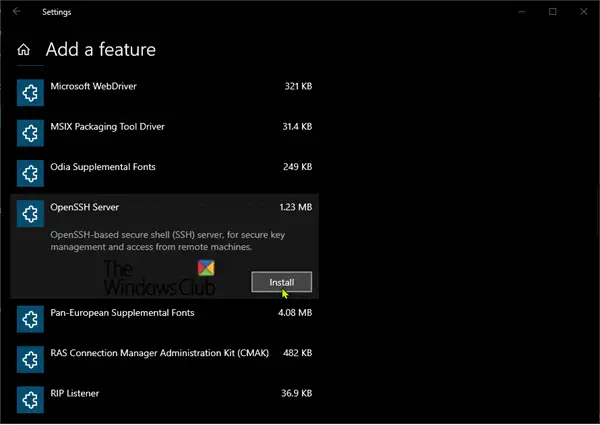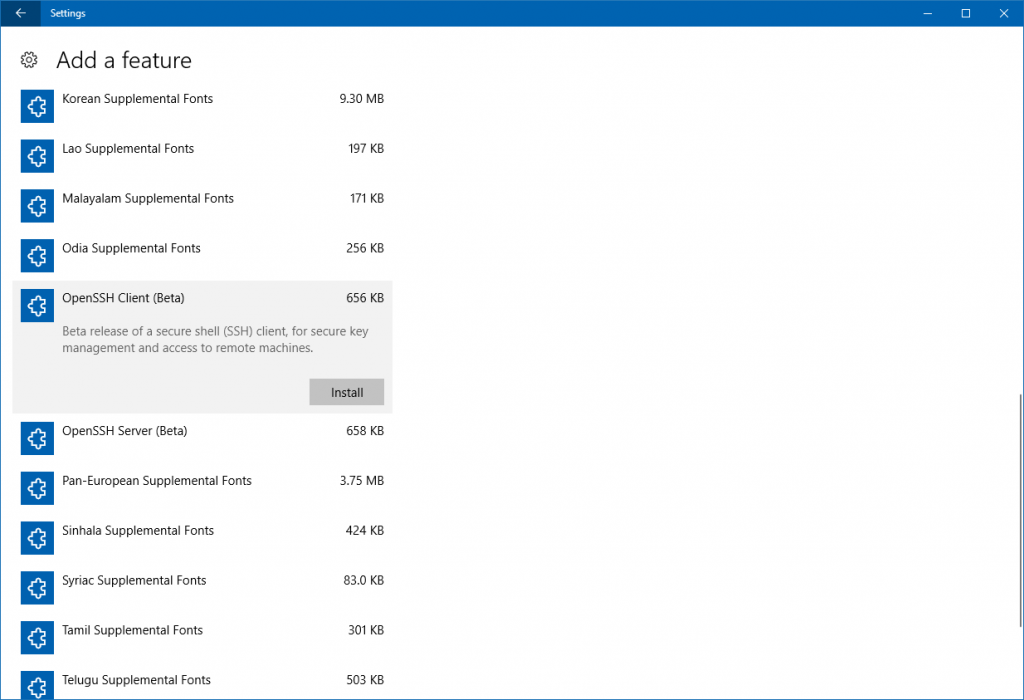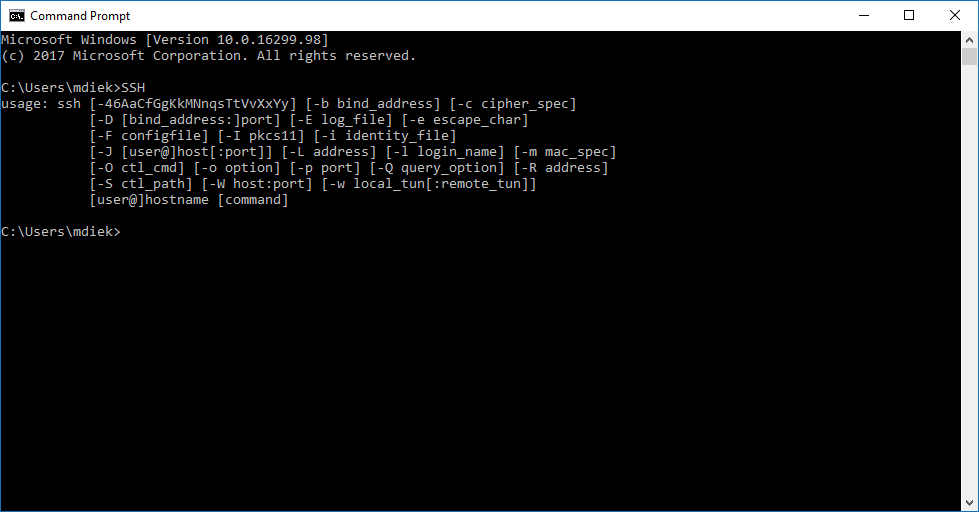

- #Openssh windows 10 how to
- #Openssh windows 10 install
- #Openssh windows 10 update
- #Openssh windows 10 portable
To do this, open up your PowerShell console and run choco install OpenSSL.Lightas shown below. For this guide, we will use the test lab created in VirtualBox. I'm on a Windows 10 machine, with an SSH client at C:\Windows\System32\OpenSSH (must be part of the OS these days). Installing OpenSSL on Windows 10 with PowerShell and ChocolateyĪssuming you have installed Chocolatey using the installation instructions, your first task is to install OpenSSL on Windows 10. Once added, it will be shown in the list of optional features. PowerShell ISE, Visual Studio Code or any text editor of your choiceĪll screenshots in this guide were taken from Windows 10 build 1909 and PowerShell 7. You can install OpenSSH Server by launching Windows Settings and then navigating to Apps > Optional features, clicking Add a feature, selecting OpenSSH Server, and clicking Install.Chocolatey – A package manager for Windows installed.Windows PowerShell 5.1 (comes with Windows) or PowerShell 7.In addition, OpenSSH provides a large suite of secure tunneling capabilities, several authentication methods, and sophisticated configuration options. It encrypts all traffic to eliminate eavesdropping, connection hijacking, and other attacks. A Windows system with Local Administrator rights – The tutorial will be using Windows 10 OpenSSH is the premier connectivity tool for remote login with the SSH protocol.While OpenSSL historically is a Linux OS utility, you can use it with Windows OS as well. In this article, you are going to learn using a hands-on approach. To install OpenSSH server, start Settings and then go to Apps > Apps and Features > Manage Optional Features. Scroll down until OpenSSH Client (beta) and OpenSSH Server (beta) become visible. Select 'add a feature' on the manage optional features page.

Validating CSRs, Certificates, and Keys with OpenSSL You can install both OpenSSH features in the following way: Use the shortcut Windows-I to open the Settings application.Using OpenSSL on Windows 10 to Generate a CSR & Private Key.
#Openssh windows 10 update

I have the Ubuntu Bash shell installed, and I noticed that when it is running, the ssh version command ssh -V gives the string “OpenSSH_7.6p1 Ubuntu-4ubuntu0.3, OpenSSL 1.0.2n ”.

For more information, refer to 1900 Non-security fixes FIDO/U2F hardware authenticators support to Win32-OpenSSH. This is not applicable for windows 10+ / windows server 2019+. I beg for pardon for asking two questions in the same post, but the second question is related to the first. Validate the ACLs of env:programdatassh folder, its contents. Has anyone heard either about the update cadence that Microsoft will keep for updating the Windows version of OpenSSH, or if they have in place or are developing a way for the end user to update the OpenSSH on Windows software? There, I read that the latest release of the software was on 2020 Valentine’s Day, version 8.2.
#Openssh windows 10 how to
My question comes from being curious checking the OpenSSH website, because it HAS been awhile since I last visited the whole idea of SSH in general, and OpenSSH in particular. How to Enable SSH Server on Windows 10 Go to the Settings > Apps > Apps and features > Optional features (or run the command ms-settings.
#Openssh windows 10 portable
I understand that this version is a “beta” (reported by ssh -V as “OpenSSH_for_Windows_7.7p1, LibreSSL 2.6.5” I think the p here denotes portable but I may be misunderstanding that part). Currently, I have installed the OpenSSH client, via Settings -> Apps -> Optional Features on my rig running Win10 1909.


 0 kommentar(er)
0 kommentar(er)
